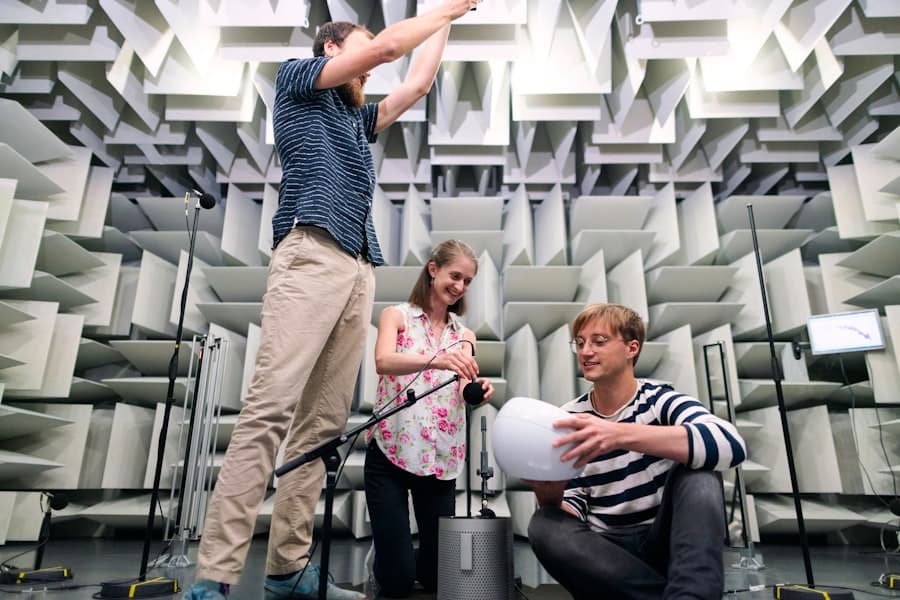The integration of artificial intelligence (AI) into employee onboarding processes marks a significant evolution in how organizations welcome and integrate new talent. Traditionally, onboarding has been a labor-intensive process, often characterized by paperwork, repetitive training sessions, and a lack of personalized engagement. However, with the advent of AI technologies, companies are now able to streamline these processes, making them more efficient and tailored to individual needs.
AI can analyze vast amounts of data to identify the best practices for onboarding, ensuring that new hires receive the information and support they need to succeed from day one. Moreover, AI’s capabilities extend beyond mere automation; they also enhance the overall experience for new employees. By leveraging machine learning algorithms and natural language processing, organizations can create onboarding programs that adapt to the unique learning styles and preferences of each individual.
This not only fosters a sense of belonging and engagement among new hires but also accelerates their time to productivity. As businesses continue to navigate the complexities of a rapidly changing workforce landscape, the role of AI in onboarding is becoming increasingly critical.
Key Takeaways
- AI is revolutionizing employee onboarding by automating administrative tasks, personalizing experiences, and improving compliance and security measures.
- AI plays a crucial role in automating administrative tasks such as paperwork, data entry, and scheduling, allowing HR professionals to focus on more strategic aspects of onboarding.
- AI enables personalized onboarding experiences by analyzing new hire data and preferences to tailor training, communication, and support, leading to higher engagement and retention.
- AI can be used for training and development by providing personalized learning paths, feedback, and performance analysis, leading to more effective and efficient employee development.
- AI improves compliance and security measures by analyzing data for potential risks, ensuring regulatory compliance, and detecting and preventing security breaches, ultimately creating a safer and more secure onboarding process.
The Role of AI in Automating Administrative Tasks
Streamlining Administrative Tasks
One of the most immediate benefits of incorporating AI into the onboarding process is the automation of administrative tasks that often bog down human resources teams.
By utilizing AI-driven chatbots and virtual assistants, organizations can significantly reduce the time spent on these repetitive activities.
Enhancing HR Productivity
For instance, a chatbot can handle frequently asked questions about company policies or benefits, allowing HR personnel to focus on more strategic initiatives. Additionally, AI can streamline the collection and processing of necessary documentation. New hires often need to submit various forms, such as tax documents and identification verification.
Improving the Onboarding Experience
AI systems can automate these processes by guiding employees through the submission steps, ensuring that all required information is collected accurately and efficiently. This not only minimizes errors but also enhances the overall onboarding experience by reducing the administrative burden on new employees.
AI-Powered Personalized Onboarding Experiences

Personalization is a key trend in modern employee onboarding, and AI plays a pivotal role in achieving this goal. By analyzing data from various sources, including previous onboarding experiences and employee feedback, AI can tailor the onboarding journey to meet the specific needs of each new hire. For example, if an employee has a background in a particular software or tool, AI can prioritize training modules that build on that existing knowledge rather than starting from scratch.
Furthermore, AI can facilitate personalized learning paths by recommending resources based on an employee’s role, department, and career aspirations. This level of customization not only enhances engagement but also empowers employees to take ownership of their learning journey. Companies like IBM have successfully implemented AI-driven onboarding platforms that adapt content in real-time based on user interactions, ensuring that new hires receive relevant information when they need it most.
Using AI for Training and Development
Training and development are integral components of the onboarding process, and AI technologies are revolutionizing how organizations approach these areas. Traditional training methods often rely on static content that may not resonate with every learner. In contrast, AI can create dynamic training experiences that adjust based on real-time feedback and performance metrics.
For instance, adaptive learning platforms powered by AI can assess an employee’s progress and modify training materials accordingly, ensuring that they grasp essential concepts before moving on to more advanced topics. Moreover, AI can facilitate continuous learning beyond the initial onboarding phase. By analyzing employee performance data and identifying skill gaps, organizations can recommend targeted training programs that align with both individual career goals and organizational needs.
This proactive approach not only enhances employee satisfaction but also contributes to a more skilled workforce capable of adapting to changing business demands.
AI’s Impact on Improving Compliance and Security Measures
In an era where data privacy and compliance are paramount, AI technologies are proving invaluable in enhancing security measures during the onboarding process. Organizations must ensure that new hires understand compliance requirements related to data handling, workplace safety, and company policies. AI can assist in this area by automating compliance training modules that are tailored to specific roles within the organization.
Additionally, AI can monitor employee interactions with sensitive information to detect potential security breaches or non-compliance issues. For example, machine learning algorithms can analyze patterns in data access and flag any unusual behavior for further investigation. This proactive approach not only mitigates risks but also fosters a culture of accountability among employees as they navigate their responsibilities within the organization.
The Future of AI in Predictive Analytics for Onboarding

As organizations continue to harness the power of AI in onboarding processes, predictive analytics is emerging as a game-changer. By analyzing historical data related to employee performance, retention rates, and engagement levels, AI can provide insights into which onboarding practices are most effective in driving long-term success. For instance, predictive models can identify trends that correlate with higher retention rates among new hires who receive specific types of training or mentorship.
Furthermore, predictive analytics can help organizations anticipate potential challenges during the onboarding process. By identifying patterns in employee feedback or performance metrics, companies can proactively address issues before they escalate. This forward-thinking approach not only enhances the onboarding experience but also contributes to a more resilient workforce capable of navigating future challenges.
Challenges and Ethical Considerations in AI-Driven Onboarding
While the benefits of AI in employee onboarding are substantial, there are also challenges and ethical considerations that organizations must navigate. One significant concern is the potential for bias in AI algorithms. If not carefully monitored, AI systems may inadvertently perpetuate existing biases present in historical data, leading to unfair treatment of certain groups during the onboarding process.
Organizations must prioritize transparency and fairness in their AI implementations to ensure equitable experiences for all new hires. Additionally, there are privacy concerns associated with collecting and analyzing employee data. Organizations must strike a balance between leveraging data for personalized experiences and respecting individual privacy rights.
Clear communication about data usage policies and obtaining informed consent from employees are essential steps in building trust and ensuring compliance with regulations such as GDPR.
Embracing the Potential of AI in Employee Onboarding
The integration of AI into employee onboarding processes represents a transformative shift in how organizations approach talent integration. By automating administrative tasks, personalizing experiences, enhancing training programs, improving compliance measures, and leveraging predictive analytics, companies can create a more efficient and engaging onboarding journey for new hires. However, as organizations embrace these advancements, they must remain vigilant about addressing challenges related to bias and privacy.
As we look toward the future, it is clear that AI will continue to play a pivotal role in shaping the landscape of employee onboarding. Organizations that proactively adopt these technologies while prioritizing ethical considerations will be well-positioned to attract and retain top talent in an increasingly competitive job market. Embracing the potential of AI not only enhances the onboarding experience but also contributes to a more agile and skilled workforce ready to meet the demands of tomorrow’s business environment.
In a recent article on NeuronWriter SEO NLP Optimization, the importance of utilizing advanced technology to enhance content creation and optimization is discussed. This article highlights how AI can be leveraged to streamline processes and improve efficiency in various aspects of business, including employee onboarding. By incorporating tools like NeuronWriter, companies can ensure that their onboarding materials are engaging, informative, and tailored to the needs of new hires. This integration of AI technology into employee onboarding processes aligns with the overarching theme of utilizing AI to enhance efficiency and effectiveness in the workplace.
FAQs
What is AI?
AI, or artificial intelligence, refers to the simulation of human intelligence processes by machines, especially computer systems. These processes include learning, reasoning, and self-correction.
How can AI streamline employee onboarding processes?
AI can streamline employee onboarding processes by automating repetitive tasks such as paperwork processing, training scheduling, and answering common employee questions. It can also personalize the onboarding experience for each employee based on their role, skills, and preferences.
What are the benefits of using AI in employee onboarding?
Some benefits of using AI in employee onboarding include increased efficiency, reduced human error, improved employee experience, and the ability to analyze data to continuously improve the onboarding process.
Are there any potential challenges or drawbacks to using AI in employee onboarding?
Challenges of using AI in employee onboarding may include the initial cost of implementation, potential resistance from employees, and the need to ensure that AI systems are ethically and responsibly designed and used.
What are some examples of AI applications in streamlining employee onboarding processes?
Examples of AI applications in streamlining employee onboarding processes include chatbots for answering employee questions, machine learning algorithms for personalized training recommendations, and natural language processing for analyzing feedback and improving the onboarding process.

